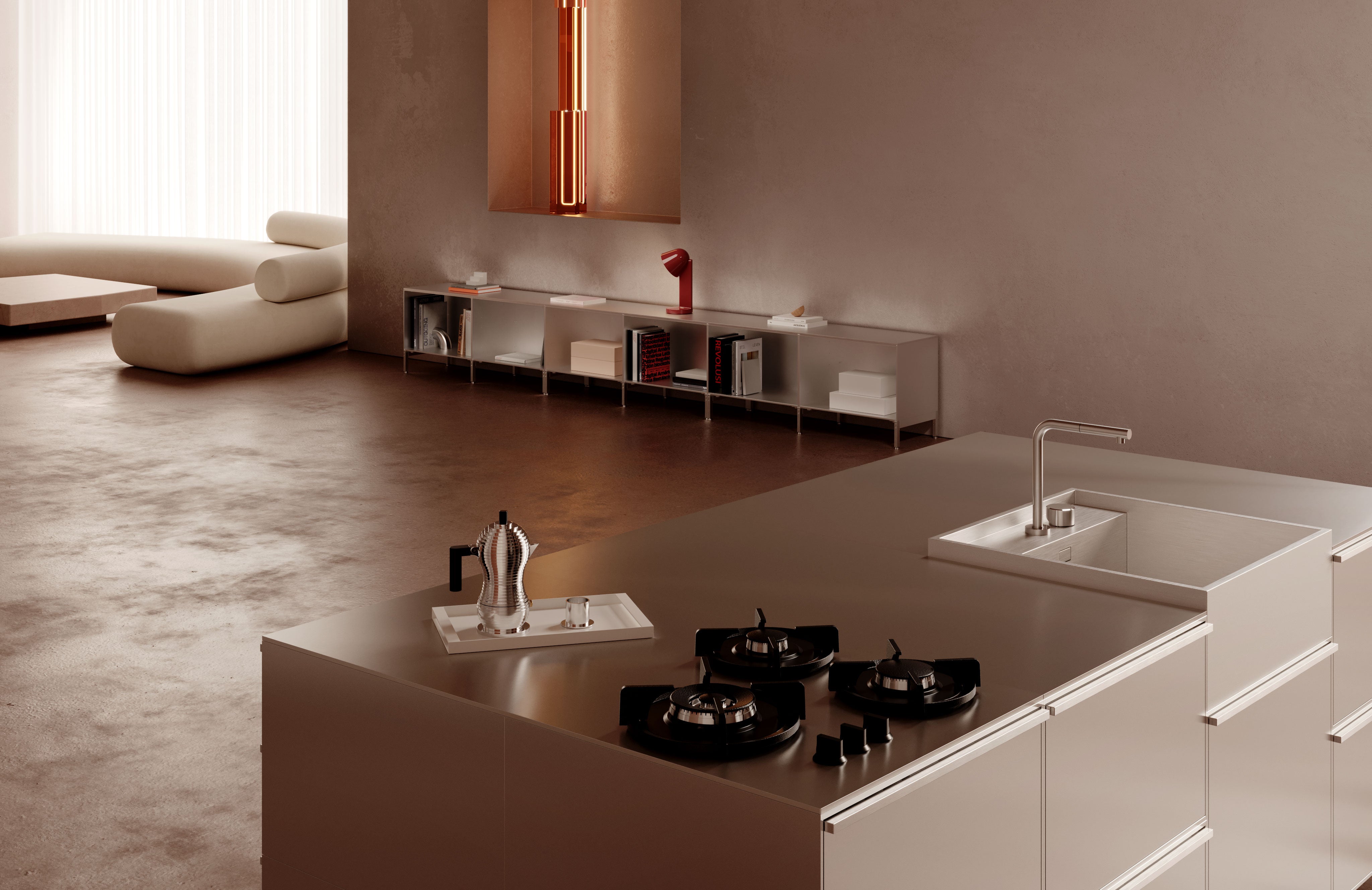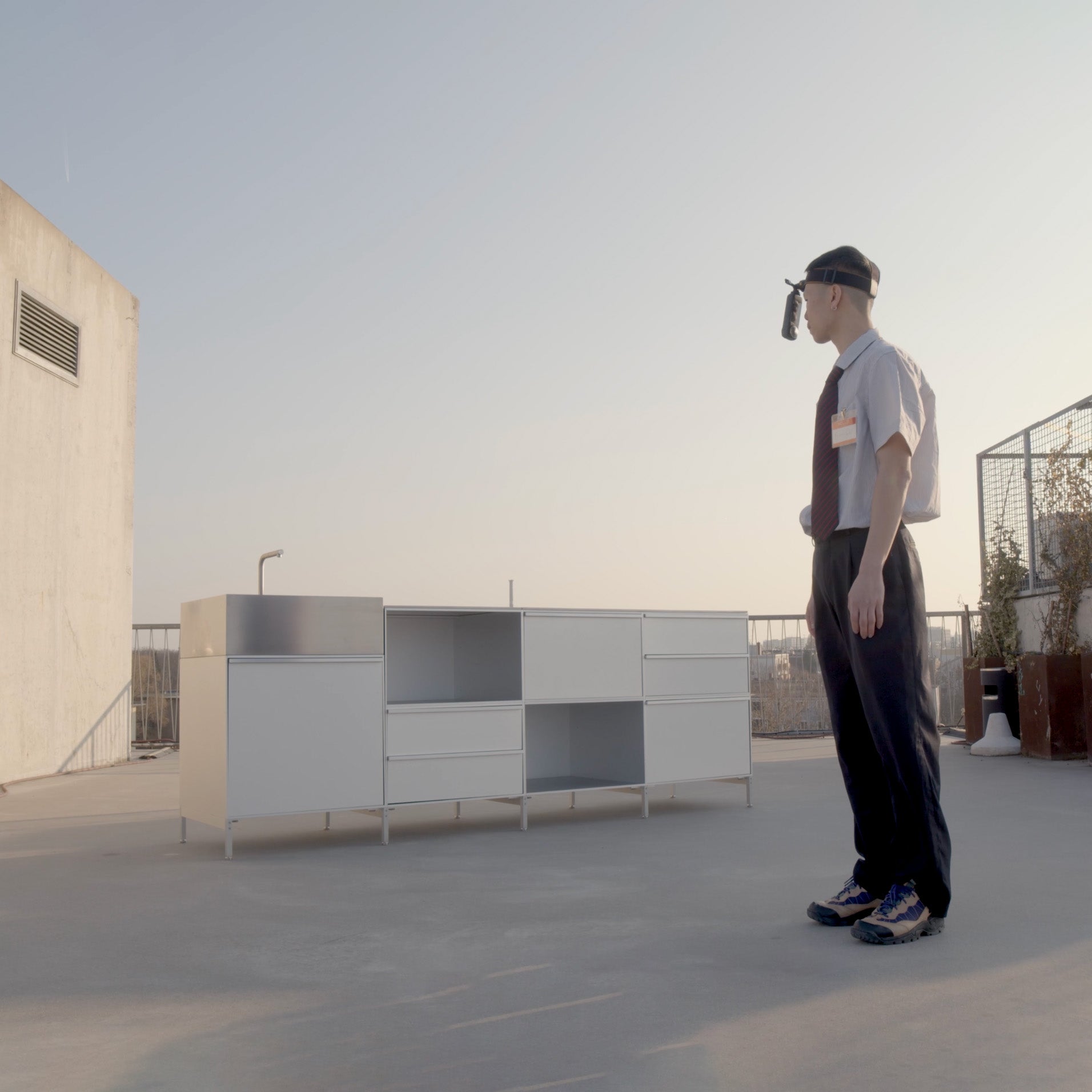LinYi-Hsin
Berlin's First Bread Gallery?... Bakery Visit with Thanos & Kolja of KEIT Berlin.

KEIT Berlin may certainly offer some of the city's most favoured sourdough loaves, but today we're stopping by not for a taste, but rather to learn about the process of envisioning and designing what's become one of Berlin's most experiential and memorable bakery interiors.
At TERMINO, we're all about the interplay between design, food and spatial experience, and so it was a real pleasure to visit KEIT's enthusiastic founders, Thanos & Kolja to hear their philosophies that continue to inform the evolving design of the space. We hope you enjoy.

We opened our conversation on the topic of Thanos & Kolja's non-traditional route into the bread world.
K: We were working in corporate at adidas together before opening the bakery. This is where we got to know each other. On the side of my job, I started making sourdough bread, and so, working closely together, obviously we got on the topic of sourdough. Then, the department we worked in was closed, and so we were in front of the question: what are we going to do next?
And adidas was all about apparel and footwear which was not so interesting for us anymore, and we were looking for something that was a little bit more meaningful.
T: We had different journeys but arrived at the same point where we said, okay, bread is something that we see a purpose in, that we feel is something emotional that connects to people's hearts and minds. And so we said, okay, this is something we're passionate about, and so, we kicked off KEIT.
I was then surprised and interested to learn how their lack of experience in the industry almost became an advantage in the design process of their retail space.
K: We both didn't have a legacy in owning or running anything around bakeries, and so we weren't necessarily thinking 'this is how it has to be done'. And so the way that we liked to do things was to start with the user and look at the feeling this person has in the store and build everything based on that.
T: The starting question was: how do we make people feel the way we do about bread?
How do we actually touch their feelings? Because our experience was that most bakeries have a very typical setting; this cash register, and dedicated ways for how to actually walk into a bakery, what you see, how you are treated. And we said that that really plays into a very transactional experience of bread, which is why we said it needs to be different.
K: It's pretty much showcasing people the experience of what we're all about. You will see an open structure where there's no boundaries or a sense of a cashier counter where you feel it's a transactional situation.
T: It's more like a more intimate situation that you have at home or with your friends. This was very important to us. Many people refer to the space as more like an Apple store for bread or a bread boutique. But it's not necessarily for the sake of creating a unique space, it was more from the results of all the questions and interviews of people, and [the store design] was pretty much the answer.
T: Some people in the beginning said that this might be a big marketing hoo-ha. Like, 'they built up a store, but there might be some crap bread'. But for us, it's exactly the other way around. The foundation of the bread is so important. The interior of the shop should basically just reflect those values.
[Bread] is something that's so particular and special that it needs attention. It's something that has an emotional value as opposed to just nutritional value. That's why we said, okay, it needs to be an open space to give people the opportunity to find their own ways to engage with the bread. When entering the space, it's not only about the product, it's about the overall experience around the topic of bread.
Their vision and passion was clear. I was curious then how they realised the ideas from their vibrant discussions into reality.
K: We pulled in people with a more architectural background to think about the functional elements we didn't have in mind. There was an agency called SUNST Studio focused on design works, but also architectural and interior work. We basically joined our thinking and vision with theirs to finally create the space. We worked with them to execute the visuals we had created and bring them to life.
T: We're very open for these collaborations between design, architecture and art in order to create unique experiences for people when they walk into the space. We like this intersection of function, emotion and let's say, art.
We had this artist, [Studio Lilo], come in to create these wheat fields in store, so people living in the city can experience how a wheat field might look like. Not that they won't have seen this somewhere, but so that they're making the connection with what it turns into.
Being a design studio ourselves, at TERMINO, we were of course eager to learn of the intentions and thought processes behind material selection for the KEIT Bakery.
K: We used organic materials like wood, and wherever we could, it was sourced locally from the streets of Berlin, and not cut for us. Whenever they build roads or constructions where trees need to be cut in Berlin, Mischa, the guy from the carpenter shop, has a connection so that he receives these trees so they will not be shredded or burned.
When we started, we were faced with an already existing terrazzo floor, and we could've taken the decision like many retail spaces and do a concrete floor so that it looks more sleek. But Thanos and I were a lot about preserving things, and [the terrazzo floor] was screaming to be preserved. So we we used it as a foundation and built everything around it.
T: We made sure that elements of the bakery are used in the front part of the shop. So we use shelves from stainless steel because it's something that's used in kitchen or bakery environments and it's a way to merge these two elements into one, so there's no distinct separation between the two entities, and everything becomes a bit more fluid.
The wall colour is made out of clay so it creates a certain room climate because it doesn't contain artificial or chemical materials. It also gives somehow the same feeling of a natural look in the store.
K: It's a mix of natural materials that are close to something organic, with stainless steel that needs to be used for hygiene reasons. These kind of elements are the foundation of the space, and when you put the bread in there it's a perfect balance, and it all comes together.

I asked them about their plans for evolving the interior design, and on a warm note of serendipity, it became clear that TERMINO and KEIT share some parallel thinking on the topic of modularity. Kolja elaborated.
K: It's a modular space that's quite flexible. We always said to ourselves that the space will never be finished. It will always be 70%. Because as we evolve and the number of breads evolves.
T: We built flexibility into the space. The desks are on wheels to move things around whenever needed. Because we like to experiment with different settings and we wanted to see actually how people navigate through the space and what they find interesting. Also because we've never been clear on what the future brings, so made sure whenever we build something it has flexibility.
To conclude, I was curious to hear how Kolja & Thanos might summarise the philosophy of interior design behind KEIT.
K: Ultimately, it comes down to a minimalistic approach; the reduction of anything unneeded in our view, to reduce it down to the bare necessities of the five or six breads we have. We could stuff it with newspapers and other products, as in a timeless, typical bakery, but we intentionally wanted to reduce this and focus on less.
T: It's about the appreciation of amazing bread. Outside the store, we want them to feel excited. People tend to stop in front of the store and think about it. People feel like, 'Okay, what is this? This is intriguing'.
The moment you think about 'a bakery', you already have some picture in your head in regards to what it looks like — which is what you don't find here. We refer to it as the What the fuck? moment. They don't know exactly what it is. Is it a gallery? A sneaker store? And sometimes it's something that is intriguing because you really want to find out what it actually is.
And I think the moment you enter the space you feel that this is something that elevates the product to a totally different level; to a more emotional environment where you feel people can really understand the beauty of bread, and they also feel connected to the richness of it.
Thank you to Kolja & Thanos for welcoming us into your space and enlightening us with your story (and thank you for the delicious Dinkelbrot loaf!).











